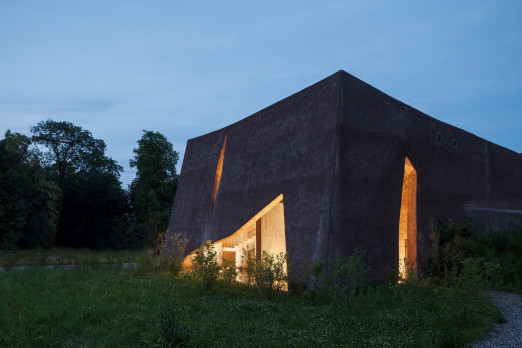Agricultural entrepreneur and founder of the Museum of Shit, Gianantonio Locatelli, constructs ceramic-like objects out of cow dung.
As featured in the V&A’s latest exhibition, Food Bigger than Plate, Locatelli’s work illustrates the benefit of using waste products to reinvent traditional materials.
Locatelli owns a cattle farm in Castel del Bosco, Italy, which has approximately 3,500 cows which produce milk for the production of Grana Padano cheese.
Due to the vast amounts of manure produced by his cattle, Locatelli collaborated with architect Luca Cipelletti to create a material he calls ‘Merdacotta.’
Merdacotta, is translated as ‘baked shit’ and is a terracotta-like material crafted from combining cow manure, Tuscan clay and straw.
After the manure is collected, it undergoes a purification process where the urea and methane are extracted, transforming it into an odourless material.
The extracted methane is used to produce energy for heating the museum and farm (3 megawatt-hours each day), whilst the urea is used to produce plastic.
The manure which is dried from the methane is used to create a fertiliser for fields, distributing nitrate into the soil for plant fertilisation.
Once the odourless manure, clay and straw are combined, the material is fashioned into Locatelli’s chosen design — bricks, plaster, floor tiles, toilets and tableware — before being baked in an oven at 1000 degrees Celsius, similarly to how traditional ceramics are made.
Locatelli’s products champion form over shape. When more straw is added to the mix, the heating process produces tiny holes and imperfections in the Merdacotta, much like what terracotta looked like before it was industrially produced.
Merdacotta is lighter than industrial terracotta, more resilient to the cold weather, and is increasingly resistant to cracking. Locatelli’s tableware is covered in glaze then baked again, and can be used to eat and drink from. To learn more about Merdacotta and Locatelli’s Museum of Shit, visit their website.
.jpg)

-122010.jpg)
